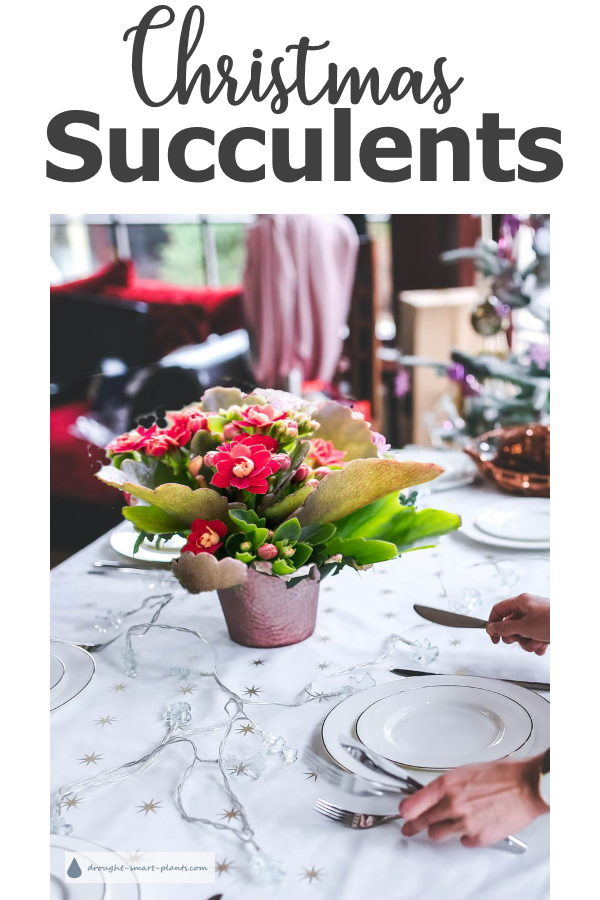Did You Get a Beautiful Plant For The Holidays?
There are several succulents that flower around Christmas, making them the perfect gift for plant lovers – or even those that kill every plant in sight.

Succulents are the most forgiving of plants, so even those with less than green thumbs can have success with them.
The most popular succulents for Christmas gifts are those that are super easy to grow, and preferably blooming.
There are several that seem to get gifted by colleagues at work, or to a special friend, which are easy to grow and keep healthy.
There are three that are commonly given as a gift around this time of year, because they naturally bloom in winter. In some cases they are groomed by the grower in special conditions geared to trigger blooming, making them extra beautiful.
Over the years, this has become a booming trade as the demand for flowering plants at Christmas time increases.
Mostly, this triggering process starts around September when commercial greenhouses prepare by striking lots of cuttings of certain varieties.
Over the next two months, careful watering, feeding and light schedules are maintained, and the rapid growth and cycle of light and dark will trigger blooming just in time for the holidays.
The three most popular plants are the Jade plant or Money Tree, which is the only one not sold in bloom. With size, age and being root bound, you may be lucky enough to see them flower.
Crassula ovata or C. argentea is also known as the money tree and is given as a good luck booster – what could be better for the New Year?

The next very popular plant is the Christmas Cactus, Schlumbergera.
These are usually sold in bud, before the flowers open as the flowers themselves are quite fragile. Once they are in the place in your house where they are to bloom, don’t move them as the buds will drop.
After the holiday season, let them dry out and go dormant – give them water over the summer as they rest on the porch or hung up in a tree.
In September, you can start more regular watering and a fertilizer regimen to get them to bloom again, just in time for Christmas.

Third on the list is the Flaming Katy plant, Kalanchoe blossfeldiana.
These come in many colors, ranging from clear white, through yellow to orange and red.
Even after the flowers finish their show in the middle of February, these make a great show with the glossy oval and serrated leaves.

These are grown in special conditions, to promote blooming. This is called ‘forcing’.
Most home gardeners can’t provide the right conditions for them to bloom again with the same vigor, although they will still produce a less spectacular showing.
Other plants you could receive are Hoya, Poinsettia or even Wax Begonia, all of which make great houseplants, at least for a little while.
If you’re lucky enough to be the recipient of one of these gorgeous plants, start getting familiar with their needs and keep it healthy until next season.
With regular watering and a stint outdoors in the summer, it’s possible to get it blooming under lights for another holiday display.
To care for them and keep them happy in your home during Christmas, make sure they get enough light, and don’t give them too much water.
- When you water (with tepid water, of course) let it drain out the bottom drain holes before you put it back in it’s display. This situation is the exception to the recommended ‘drench and dry’ regimen of watering – give small amounts often, as the air in your home is most likely very dry due to the heating system. Once the season is over, resume the watering system these plants like best – a good drink, then allowing them to dry almost completely.
- Turn the plant one quarter turn every day to keep it from dying off on one side, or starting to lean. Light requirements vary, but all succulents prefer good light levels and day length, so use a grow light if you need to.
- Let them go dormant or at least have a rest after they bloom to recover.
- Fertilize lightly once they start to grow in the spring.

